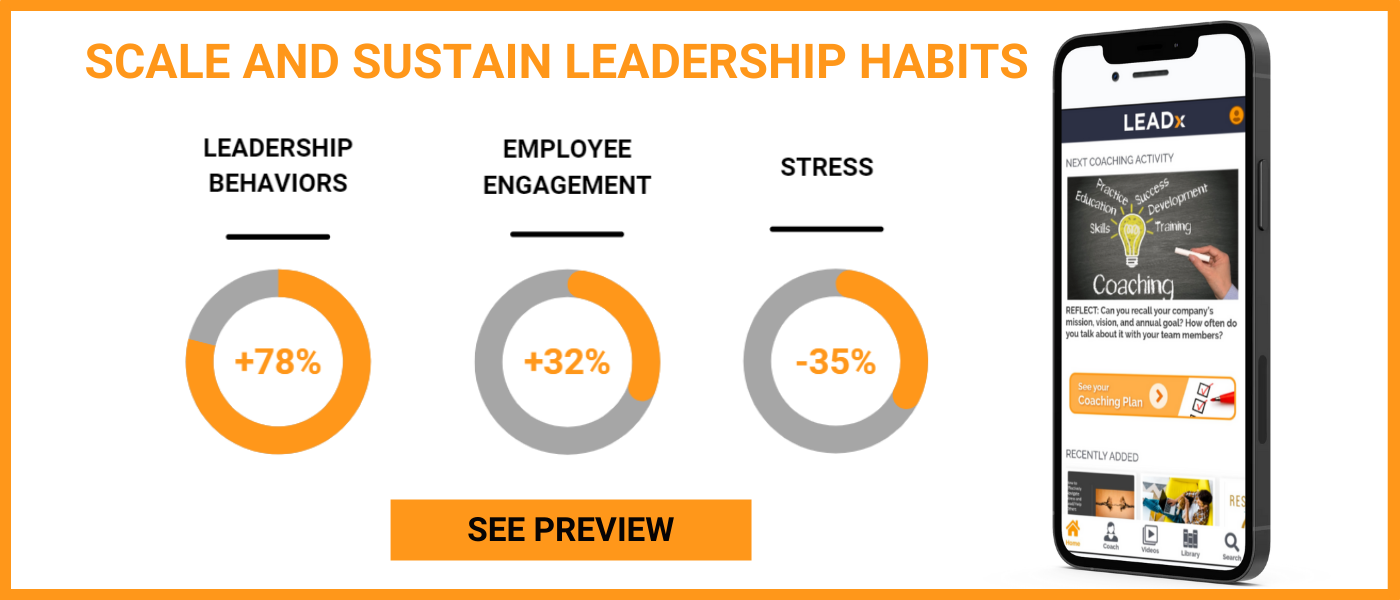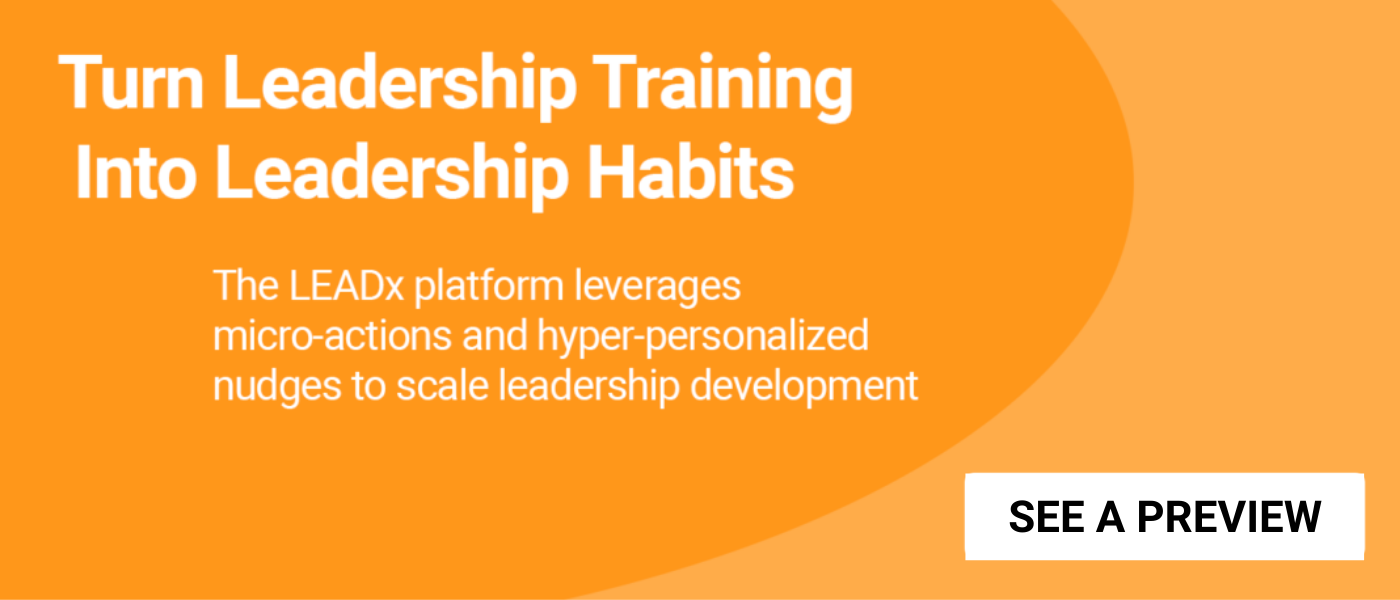
Leadership and managerial effectiveness have always been critical business topics, however, since the onset of the pandemic, managers everywhere have taken on even greater importance. The Gallup 2023 State of the Global Workplace poll found that 44 percent of workers are experiencing “a lot of stress” which matches the high levels found in 2021. Research by UKG indicates that managers impact employees' mental health even more than doctors or therapists. Add to this the prominence of hybrid work environments, and the leadership requirements of managers are clearly more complex than ever before.
 Recognizing the pivotal role people managers play in employee engagement and mental well-being, Adobe –with a mission to change the world through digital experiences–set out to reimagine leadership training with a program they call the Adobe Leader Experience (ALE).
Recognizing the pivotal role people managers play in employee engagement and mental well-being, Adobe –with a mission to change the world through digital experiences–set out to reimagine leadership training with a program they call the Adobe Leader Experience (ALE).
Training That Is Aligned And Connected

In designing ALE, Adobe's primary focus was on creating connected experiences. According to Brandon Clark, Global Head of Talent Development, Adobe, “We're being very thoughtful about how to create journeys where we place employees in the center, rather than executing siloed programs from our different functional areas. Working this way helps our Employee Experience team create a more frictionless experience.”
Adobe applied this philosophy to ALE by linking it closely with their quarterly Check-in conversations. “Check-in” has been Adobe’s approach to performance management for over a decade. It replaces the awkward annual rating discussions with two-way conversations that provide Adobe employees with the clarity they need to be successful in their roles and to support career growth. Each quarter of ALE is tied to a specific theme:
- Q1: Goals That Raise the Bar: Managers learn how to help their teams create stretchy and outcome-focused goals.
- Q2: Giving Genuine Feedback: Managers acquire the skills to provide genuine feedback, offer actionable guidance, and manage all levels of employee performance.
- Q3: Creating Conditions for Success: Managers get practical guidance to understand Adobe Employee Survey feedback and act by committing to one focus area in Check-in.
- Q4: Rewarding & Recognizing Performance: Managers learn how to reward employees based on their contributions and give actionable feedback for improvement.
Traditional approaches to manager training take a one-and-done boot camp approach, addressing a large toolbox of competencies and behaviors. Rarely has this approach been successful. As Clark explained, “From what I’ve seen, it’s common in our industry to train managers at some given point in the year or when they join the company, and then they hope and pray that they're able to use that information later. But the managers don't have a place to practice, they don't have a place to apply their learnings. And so they store it away and then inevitably forget what they learned.”
The tight alignment between quarterly training and quarterly Check-in conversations at Adobe allows people managers to immediately apply what they learn, thereby closing the “Knowing-Doing Gap” between education and application.
Training Designed For Scale And Impact
While others would be tempted to simply mass distribute a single video or eLearning module, Adobe achieved scale while still offering a high-touch high-impact program. “Any given quarter we hold somewhere in the realm of 30 to 40 sessions that people can join, and it's always kicked off by a senior leader,” explained Clark. Each session is 75 minutes long, which is the optimal length to maximize satisfaction (as measured by a Net Promoter Score methodology). “We also believe in leaders teaching other leaders, so we utilize breakout rooms to allow for two-way conversation and feedback.”
Furthermore, Adobe has segmented the sessions based on the managerial hierarchy—directors, VPs, and frontline managers. This ensures that the content is tailored to the unique challenges faced by each group, while also creating a psychologically safe environment for managers at similar levels to share insights and best practices.
High Participation, High Quality
So, has it worked? Over 80% of Adobe people managers are attending the quarterly sessions, which is a very high attendance rate. Adobe saw an immediate effect. Overall people leader confidence has increased by over 10%, there has been a boost in the number of quarterly Check-in conversations completed and documented, and the quality of written feedback from managers has gone up by 40% since the program's inception. Quality results were quantified through a rigorous process of grading a representative sample of Check-in feedback on a quality rubric.
The beauty of Adobe's program is its simplicity and immediacy. Managers don't just learn; they immediately practice what they’ve learned, thereby making the program extremely effective. ALE also serves as a testament to how a well-thought-out, integrated approach to leadership training can deliver measurable results.
The Takeaway
Adobe’s commitment to addressing the complexities and stresses of managerial roles in today’s fast-paced corporate environment is not just a win for Adobe but also sets a precedent for other companies. After all, as the program shows, when you invest in your people managers, the dividends are paid back multifold—through improved performance, higher employee engagement, and a healthier workplace overall.






